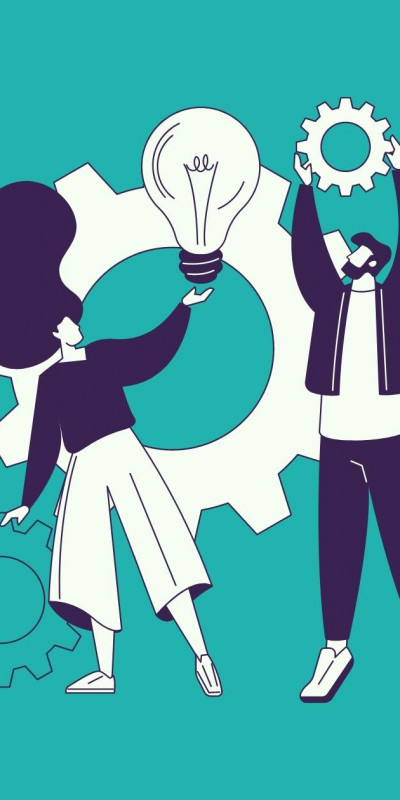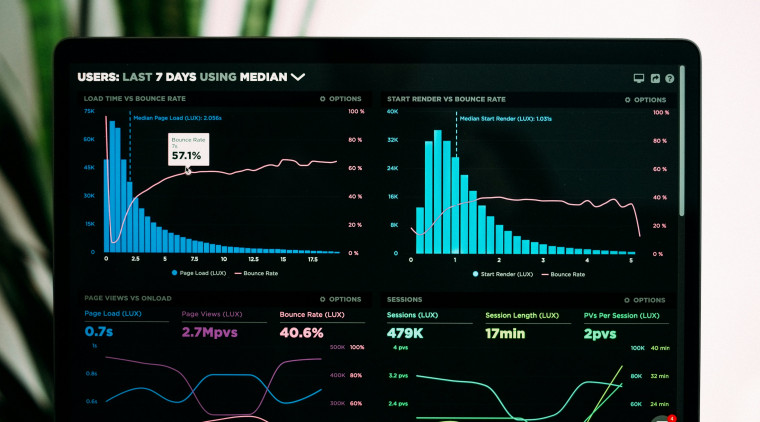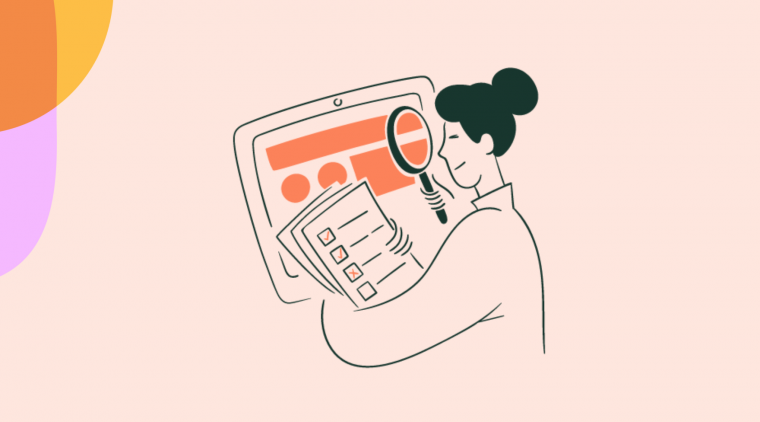Your SaaS onboarding strategy plays a big role in your product’s success. It’s the first impression users get of your product, and a deciding factor in whether they’ll stick around—so, no pressure.
Getting the onboarding right is an absolute must, and there are plenty of steps you can take to ensure yours is great.
Let’s take a look.
What is SaaS onboarding? #
SaaS user onboarding consists of introducing new users to your product and guiding them through the features on offer.
SaaS onboarding also refers to how you can support existing users in better using your product—be it by educating them with a rich knowledge base or guiding them towards features and capabilities they’ve missed.
Users need to fully understand the core value of your product, and how it can help them with their job to be done. Otherwise, they’re likely to abandon ship and join the 80% of users who’ve deleted an app because they didn’t know how to use it.
Why you need a SaaS onboarding strategy #
User onboarding is a key driving force behind product and feature adoption, user activation, customer retention, and product growth.
In other words, it’s a game-changer.
Your onboarding flow provides a structure for new users and points them in the right direction when taking their first steps with your product. Customer onboarding is a key part of success for SaaS companies and a critical point for any product-led SaaS strategy.
The aim of the user onboarding process for your SaaS business is to create a frictionless experience—give users a reason to love your product as quickly as possible, and become daily active users.
This drives users to their “aha!” moment sooner and gives them reasons to stick around and discover the other useful features your product has to offer. It also helps you create more personalized onboarding flows.
Download our User Onboarding Handbook for tips and tactics you can start applying right now 👇
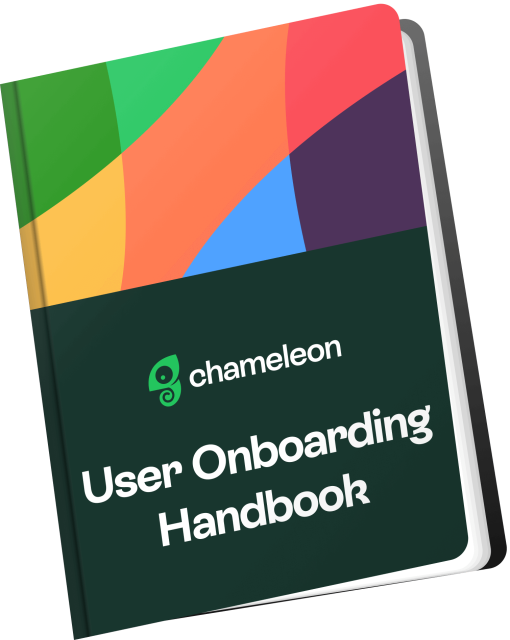
User Onboarding Handbook: Craft Exceptional Flows
It's your go-to guide to user onboarding – backed by behavioral science and packed with tips, tools, and tactics you can use to level up your onboarding game. We'll send the eBook straight to your inbox.
8 SaaS onboarding principles to keep you on the right track #
There is no set-in-stone collection of onboarding guidelines—your onboarding experience should be unique to your product.
There are, however, some onboarding principles you should keep in mind for a successful onboarding flow. These considerations help you deliver a seamless first-time user experience and ensure users can’t wait to discover more about your product.
Let’s take a deeper look at each of the principles.
1. Clarity: Understand your user pains, drains, and gains #
Clarity refers to the clarity you have regarding your product offering—what makes your product so great? Why should users stick around? How do you make their lives easier?
In order to create an effective onboarding process, you need a clear understanding of your value proposition. This enables you to highlight the key benefits of your tool for new users.
You want to understand your users’:
Pains: Problems your users want to solve with your product
Drains: Distractions and issues when trying to complete tasks
Gains: How your product helps users overcome their pains and drains
With a clear idea of these three considerations, you’ll be in a better position to create an onboarding flow that identifies and meets your users’ needs—from your signup process to your product tours, guides, and other in-app messages.
2. Transparency: Set the expectations upfront #
Next up—transparency. Let your new users know what to expect throughout the onboarding process, from their first step to their last.
Give clear and concise information regarding onboarding steps—such as what they entail and how long they take. As our latest In-Product Experiences Benchmark Report indicates, progress bars and checklists work well for giving users a clear idea of how far they’ve come, and how far they’ve got left.
Activation milestones are also useful for highlighting progress, and a good way to keep the onboarding process transparent. Celebrate each successful step your user takes, and keep them informed on what more they’ve got left.
For example, Duolingo does a great job with a clear progress bar within their onboarding tour, along with the right questions to ask to be able to engage users and personalize the flow for specific user journeys.
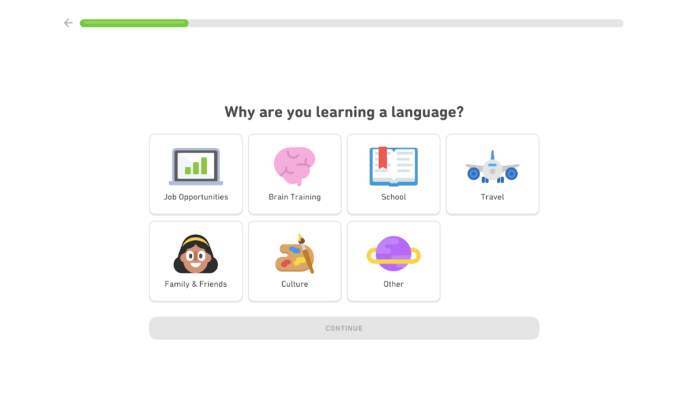
3. Consistency: Stay true to your brand #
Another key onboarding principle is consistency. Ensure your product tours and the overall onboarding process is true to your brand.
Your users have likely been interacting with your product and brand in initial communications—you want their next onboarding steps to feel native to your product experience. Offer a frictionless experience across your onboarding flow to create a consistent and familiar-feeling user journey.
There’s also no need to reinvent the wheel with your onboarding flow. SaaS users typically understand naming conventions and onboarding UI. Making it unique to your brand doesn’t mean applying fancy names to well-known features—aim to remain consistent with your industry standards. Speak the language your users know, in a way that suits your brand voice and style.
4. Interactivity: Keep users engaged #
We previously said your onboarding flow needs to be frictionless—that’s not entirely true. There’s such a thing as interactive, good friction. This includes check-in points within product tours and throughout your flow that help keep users engaged.
One way to create good interactive friction is with personalized onboarding. This enables you to categorize users based on roles and needs, and provide an onboarding experience that suits their needs—including interactivity through in-app messages and checklists at key points and steps to take.
Here’s a SaaS onboarding example from Evernote, and how they’ve used a checklist to increase user engagement and reduce the churn rate.
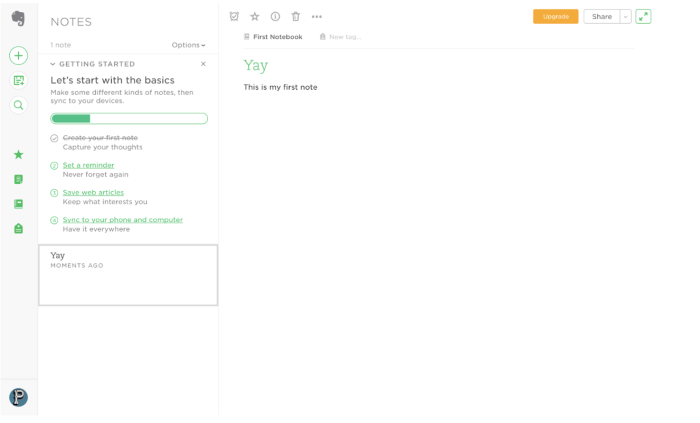
Engagement is key for reducing tour abandonment and ensuring your users stick around long enough to discover the value and encounter their “aha!” moment.
5. Guidance: Identify the best ways to help users #
Your onboarding process can incorporate a number of different support styles—from low-touch support to high-touch support.
Low-touch onboarding is more of a self-serve approach to onboarding—it enables users to get to grips with your product on their own.
That’s not to say they do it completely on their own. Low-touch onboarding still requires guidance—typically through the likes of in-app tutorials, knowledge base, webinars, welcome email sequences, product community, and more.
A human support team is always available, but the low-touch onboarding process tends to be automated and digital. Tours, Tooltips, and Launchers are all low-touch onboarding tools that help you build solid self-serve support.
Here’s an example of an onboarding tour from Mixpanel that showcases how clear and concise tour steps can help the users find their way within the product more easily.
High-touch onboarding typically involves more human interaction when onboarding. It’s best to use it when users would benefit from direct guidance, e.g. to navigate complex systems.
Common high-touch onboarding tools include 1-on-1 meetings, product demos, and video calls—often managed by a customer success manager or account manager, dedicated to ensuring user needs are met.
We spoke with Padmaja Santhanam, Growth Manager at FirstPrinciples, on how to go about low and high-touch support.
“Low-touch onboarding is best for moderately complex products. Here you can add onboarding elements such as in-app product tour checklists.
For complex SaaS products—where setting up an account or the sign-in process requires going through several steps—using high-touch support is a wiser choice. The model allows you to set up more personalized one-on-one experiences. You can infuse product demos and training sessions, and also develop customized onboarding collateral.”
– Padmaja Santhanam, Growth Manager at FirstPrinciples
Consider what combination of high and low-touch onboarding your product requires, and aim to build an onboarding experience that both new users and more advanced users will love. It will certainly help you reduce churn.
For example, Levity pre-record product demos to share with new users via their YouTube channel. This enables them to offer high-touch onboarding with less hassle—a win for both them and their users.
6. Relevancy: Don’t overdo it #
Another aspect to keep in mind is relevancy. Are you showing users what they need to see? Are you cutting down time-to-value as much as possible?
Stuffing your onboarding tour with every last piece of product and feature information can overwhelm new users and encourage onboarding abandonment. In fact, our research shows that tours of four steps and over receive a completion rate of under 50%.
This is where segmented onboarding comes in handy. Keeping it concise and relevant helps ensure users complete your onboarding flow and reach their “aha!” moment sooner. Overloading new users with unnecessary information only confuses and discourages them—a great solution shouldn’t require users to overcome a steep learning curve, after all.
7. Accessibility: Ensure an equal experience for all users #
Our next onboarding principle is a must for your onboarding processes and product experience as a whole. It’s a key UX principle for all aspects of design: accessibility.
Creating an accessible onboarding experience empowers and enables all users to make the most of your product. Consider color contrast, font sizing, message placement, language options, keyboard navigation, image alt tags, and more to ensure your onboarding meets user needs.
This extends not only to your onboarding but also to the overall product experience. Leading your design process with accessibility as a non-negotiable enables you to serve a larger audience, and outshine competitors who haven’t prioritized accessibility.
8. Continuity: Don’t set it and forget it #
SaaS onboarding is by no means a one-and-done effort. You want to keep educating and engaging users throughout their time using your product. It’s a continuous flow that starts when a user signs up, continues with the setup process and guides, and, ideally, doesn’t end.
Once you onboard new users, you’ll want to continue to nudge them towards features that could benefit them and ways they could maximize the utility of your tool.
Gather and track product data to identify opportunities for users, and opportunities for your business through continuous feedback loops. What features and capabilities nudge users towards transitioning from a free trial period to a paid subscription? What steps do they take before making their decision?
In fact, this was one of the key onboarding struggles highlighted by Padmaja from FirstPrinciples:
“Some of the significant struggles of the onboarding process in SaaS is not getting sufficient feedback. Even if a prospect is not satisfied, most of them will never take the time and effort to complain. So, for the business, it is crucial to set up an effective customer support channel to gather insights throughout the onboarding process.”
– Padmaja Santhanam, Growth Manager at FirstPrinciples
Your customer success team needs to focus not only on creating an enjoyable onboarding experience, but also on learning from how users interact with that experience. Doing so enables your team to better support your customers throughout the entire user journey—whether that’s newer users or advanced users.
That’s where a comprehensive dashboard with data from your onboarding messages and experiences can be really helpful. For example, if you build a Tour with Chameleon, you can then track relevant metrics and data insights from the Dashboard. Here’s what it could look like.
The bottom line: These are our eight best practices to keep in mind when shooting for onboarding success. They’ll help you create better onboarding flows, and improve customer satisfaction among your users. Remember, onboarding never completely stops—you just continue helping users discover more value from your product.
Your SaaS onboarding checklist: Never onboard users the wrong way again #
Now we’ve been through how you can ensure your product experience is top-notch, let’s take a look at an onboarding checklist. These are can’t-miss steps for developing a comprehensive user onboarding process.
You’ve got a clear understanding of your value proposition—the user needs you’ve identified and how your product meets them.
You know what combination of high and low-touch onboarding you’re going to offer new users discovering your software.
Your customer onboarding journey reflects and remains consistent with your branding, allowing users to quickly feel at home with your software.
You’ve focused on including relevant information in your onboarding flow and avoided unnecessary steps and friction.
Your onboarding process provides progress and completion details to users so they’ve got a clear understanding of what’s expected of them.
You’ve included key interactive checkpoints and milestones built to engage users throughout the onboarding experience.
Your onboarding flow is accessible to all users and available in a number of languages and various devices.
You’re keeping an eye on your onboarding flow—gathering data and implementing feedback to continually improve.
Make sure you’re ticking all the boxes when creating and managing your onboarding flow. Doing so helps ensure your user experience is one your users rave about.
Closing out on SaaS onboarding #
Comprehensive SaaS onboarding is key for creating engaged users who love your product. It shows customers that you don’t just care about their purchasing decision, but that you’re looking out for their success and satisfaction.
Don’t let your user acquisition efforts go to waste by sending users packing as quickly as they came—especially if you’re operating with the RARRA framework.
Use these top onboarding principles to ensure your onboarding flow is first-class. And you can use Chameleon to bring it to life. Get started with your free trial and experience how you can empower and educate your users throughout the onboarding experience.
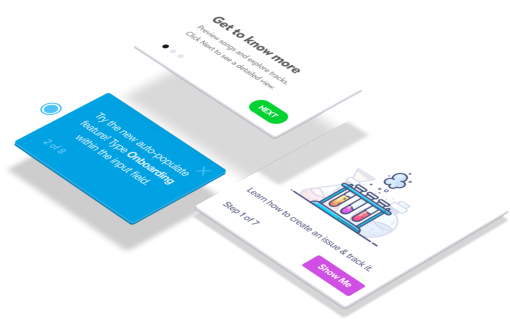
Show users the right content, at the right time
Use Chameleon's product tours, slide-outs, and modals to show users engaging content throughout their journey
